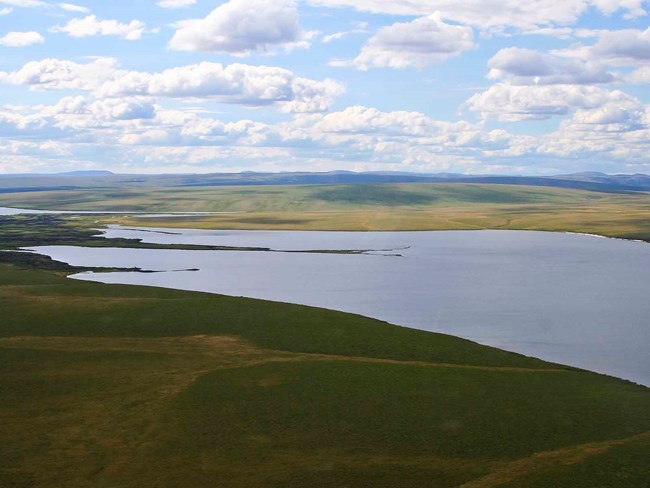
More than 300,000 acres of Arctic parklands are covered by freshwater lake ecosystems. Large lakes provide important habitat for aquatic primary producers, zooplankton, macroinvertebrates, and secondary consumers, such as fish and waterfowl. Lake ecosystems are susceptible to local, regional, and global stressors, including visitor use, air contaminant deposition, increased air temperatures, thawing permafrost and glaciers, alterations in the water cycle, and terrestrial biogeochemistry. Large lakes are associated with volcanic explosions, geologic rifts, or the presence of moraine dams. These large, deep lakes support diverse fish populations, are important to subsistence users, and are renowned for their sport fishing.
We monitor lakes in all Arctic Network parklands to answer the following questions:
- How does the chemical composition of lakes vary over space and time?
- Are lake temperatures and productivity changing?
- What is the sensitivity of lake food-webs to changing physical and chemical drivers?
Contact: Jon O’Donnell
Learn more
Last updated: January 30, 2019
